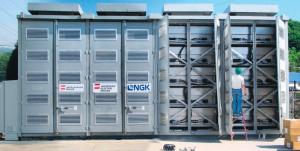ERCOT’s February emergency suggests storage capacity is needed to support renewables.
Gary Moland is a vice president in the advisory services group at Ventyx Inc. Email him at gary.moland@ventyx.com.
What do the months of March 1979, January 2001, and February 2008 almost have in common? In March 1979, a loss-of-coolant accident at the Three Mile Island nuclear station brought the expanding nuclear power industry in the United States to a dead stop. Only a handful of reactors were completed post-TMI, with the majority of projects abandoned or converted to an alternative technology.

In January 2001, the recently deregulated power market in California suffered a complete meltdown requiring the state to begin buying needed power. That in turn sent paralysis through other progressing Regional Transmission Organizations. Quickly discarded were names such as SETRANS, Desert Star, and GridSouth, as well as other would-be centralized dispatch markets.
February 2008 could have been a similarly defining moment for the U.S. windpower industry. However, in this case ERCOT averted a crisis, preventing that date from becoming a sort of Waterloo for windpower.

